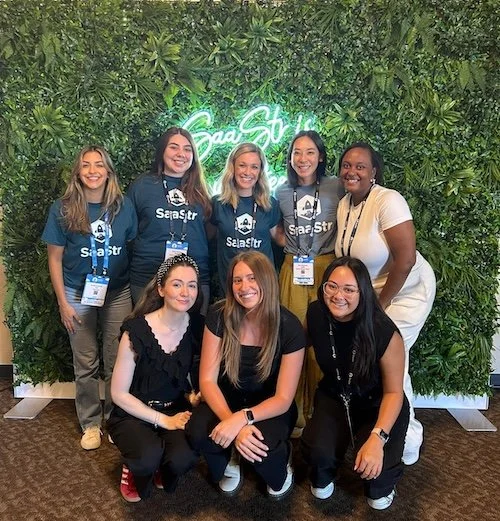This week we had the opportunity to collaborate with Lightspeed and Rich Talent Group for their second annual Building Tomorrow’s Boardroom, Today, event—a virtual panel and intimate discussion breakouts focused on supporting and promoting more people of color to the boardroom, specifically from our Black community.
More than 150 leaders—from CEOs to investors to founders and board members—joined together to drive meaningful and necessary change.
Why is it so crucial to drive such change? Black leaders are one of the most under-represented groups in the boardroom. In 2019, only 10% of board seats in the country’s 3,000 largest public companies were held by non-white directors. And among that 10%: only 4% were held by Black leaders. Since the events of 2020 and the discussions started by the Black Lives Matter movement, an optimistic 240% increase has been seen in Black board members.
Systemic changes are being seen too: California passed AB-979 requiring all public companies headquartered in the state to have at least one director on their board who identifies as an underrepresented minority by the end of 2021.
We were so honored to play a role in such a significant event with a purpose we certainly support ourselves.
Panelists came from some of the top boards in the country to share their lessons learned, wisdom and experience from their outstanding careers:
Thasunda Duckett—CEO, Chase Consumer Banking, JPMorgan Chase
Board: Nike
Mellody Hobson—Co-CEO & President, Ariel Investments
Boards: Starbucks, JPMorgan Chase
Stacy Brown-Philpot—former CEO TaskRabbit
Boards: HP Inc., Nordstrom, Black Girls Code, The Urban Institute
John W. Thompson—Venture Partner, Lightspeed Venture Partners, Chairman of Microsoft
Boards: Microsoft, Reviver, Illumio, Rubrik, Illumina
Tristan Walker—Founder & CEO, Walker & Company Brands
Boards: Foot Locker, Shake Shack
Key takeaways from conversations focused on what boards are looking for, how to know if you’re the right fit and surefire methods for bringing your A-game once you’ve landed the job:
It goes without saying, but your network is your best asset: A key characteristic tying our esteemed panelists together was the abundant network they had acquired along their ways. If you’re working toward becoming a board member, speaking at events, leaning on your alumni database, connecting with recruiters, and conversing with current board members are all ways you can grow your network to be board-ready. You truly never know who might be able to connect you to the right people or be called on for a reference or “off-the-record” check.
To know if a board is right for you, look at your passions: Defining what you care about —whether it’s fitness, retail, social change—can give you a quick list of where you’d make the best fit for a board opportunity. If a powerhouse brand comes to you, but it’s not something you’re necessarily passionate about, you might want to steer clear and shift your focus to what really matters to you. After all, board members have to do their research and homework too. And you’re doing yourself a favor by choosing a brand that speaks to what you’re interested in.
It doesn’t matter how you got there, it matters that you’re there: It’s completely normal to feel like you might have gotten your position as a board member solely because of your gender or race. While we understand that might be frustrating, try to focus on the fact that you got it in the first place—and now you’re there to do some good.
Don’t forget to pay it forward: One day, you’ll be somewhere you had only dreamed you could be. And someone else will be that hopeful board candidate. Whether you’re the newest or the youngest, don’t be afraid to let your voice be heard and stand up for what you believe in to be right. There are employees, customers, and other board members who need your insights.
We have never had such positive momentum to take action and create change. Being a part of this event was eye-opening, insightful, and contributes to our own personal mission of promoting diversity everywhere.
To read more highlights about this event, click here for Lightspeed’s recap.
We’ve also included some history and information below about this month—Black History Month —along with educational resources:
The Start of Black History Month: Black History Month is an annual celebration of achievements by African Americans and a time for recognizing their central role in U.S. history. Since 1976, every U.S. president has officially designated the month of February as Black History Month. In 1915, the Harvard-trained historian Carter Woodson and the prominent minister Jesse Moorland founded the Association for the Study of Negro Life and History (ASNLH), an organization dedicated to researching and promoting achievements by Black Americans and other peoples of African descent. For his work, Woodson has been called the Father of Black History.
Why February? The ASNLH sponsored a national Negro History week in 1926, choosing the second week of February to coincide with the birthdays of Abraham Lincoln and Frederick Douglass. In 1976, Negro History Week expanded into Black History Month.
A Few of the Many Ways to Learn More about Black History Month:
NPR Music's Tiny Desk Concert series (NPR)
This month, they will feature 13 Tiny Desk (at home) concerts by Black artists across genres.
91 movies and TV shows to stream for Black History Month (Fast Company)
Apple celebrates Black History Month (Apple)
Watch collections and exclusive content that highlight and amplify Black creators, artists, developers, and businesses.
Five ways you can celebrate Black History Month virtually (CNN)
15 books that are essential reading for Black History Month (CNN)
40 BIPOC artists to follow on Instagram (and in real life) (Bustle)
And if you’re local to the Bay Area:
Black-owned businesses in the Bay Area (SF Chronicle)
SF Bucket List’s 40 Ways to Help (SF Bucket List)
Mayor London Breed’s panel on racial justice and police reform (YouTube)
How to support Black lives and community in the Bay Area (7x7)




